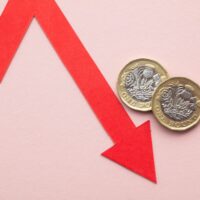
The Consumer Prices Index (CPI) measure of inflation has fallen back from 10.1 per cent to 8.7 per cent in April – the first time in eight months it has recorded single digits.
It is also considerably down from the peak of 11.1 per cent recorded in October 2022.
This latest 1.4 percentage point fall in year-on-year inflation compared to March will be welcome, as the shock energy price cap increase in April last year has fallen out of the reading.
However, the fall was partially offset by upward drivers from recreation and culture, alcoholic beverages and tobacco, communication and transport. Council tax increases were also noted.
Overall, the latest headline figure is higher than market forecasts of between 8 and 8.5 per cent.
Further, on a monthly basis, CPI has actually risen by 1.2 per cent, while core inflation which excludes energy, food, alcohol and tobacco, rose by 6.8 per cent in the 12 months to April, up from 6.2 per cent in March, taking it to a 31-year high (March 1992).
According to the figures from the Office for National Statistics (ONS), the inflation rate of food and non-alcoholic drinks eased from 19.2 per cent in the year to March 2023 to 19.1 per cent in the year to April.
It noted that the decrease in the annual rate was driven by downward price movements from bread, cereals, fish, milk, cheese, eggs, sugar, jam and honey. Meanwhile, potatoes provided the largest upward contribution to this category.
Sticky inflationary pressures keep momentum up on base rate rises
Danni Hewson, head of financial analysis at AJ Bell, said: “In April last year, households were dealing with the shock increase in energy prices as that price cap shot up. That increase has now dropped out of comparisons, but that doesn’t mean we are paying less for our energy.
“For that we will have to wait until July and even then, if the cap does fall to around £2,000 for an average household, the end of that lovely £400 rebate scheme means most people will find they are paying pretty much what they were back in October.”
She said with core inflation “heading the wrong way” it sets the scene for at least one more interest rate hike.
“Looking at market expectation this morning it seems there’s speculation the Bank of England might go as high as a 5.5 per cent base rate in order to complete its task,” he said.
Rob Morgan, chief investment analyst at Charles Stanley, said: “With groceries in particular showing little response to the Bank of England’s twelve successive interest rate rises, today’s figures could well seal a further increase in interest rates at the monetary policy committee’s next meeting on 22 June from the current level of 4.5 per cent.
“Like other major central banks, the Bank of England is near the end of its interest rate hiking cycle but will likely maintain tight policy for the remainder of the year, meaning no significant rate cuts until 2024. While the battle with inflation will be won, it will likely be a long and arduous one with central bankers’ credibility at stake.”

















